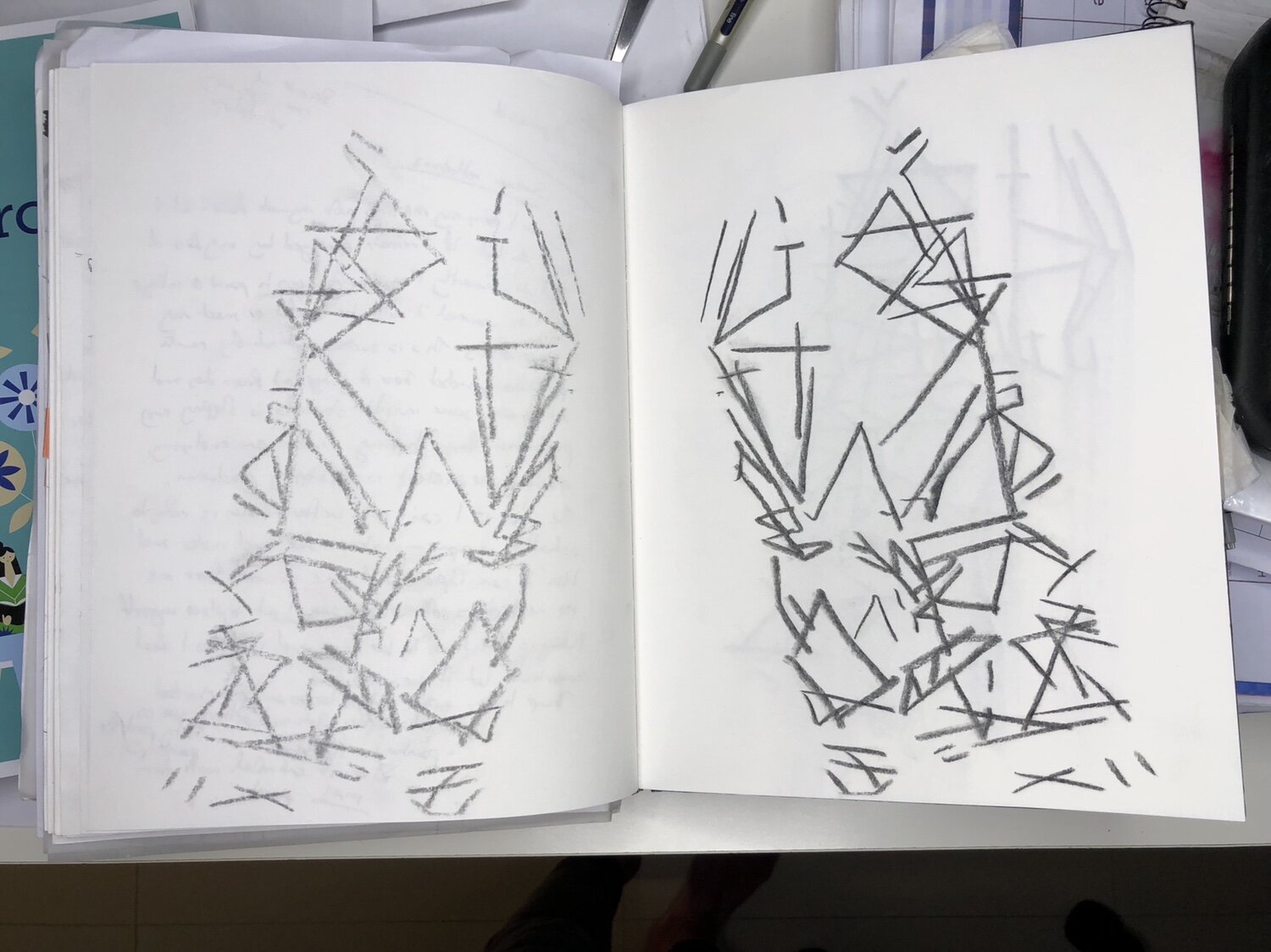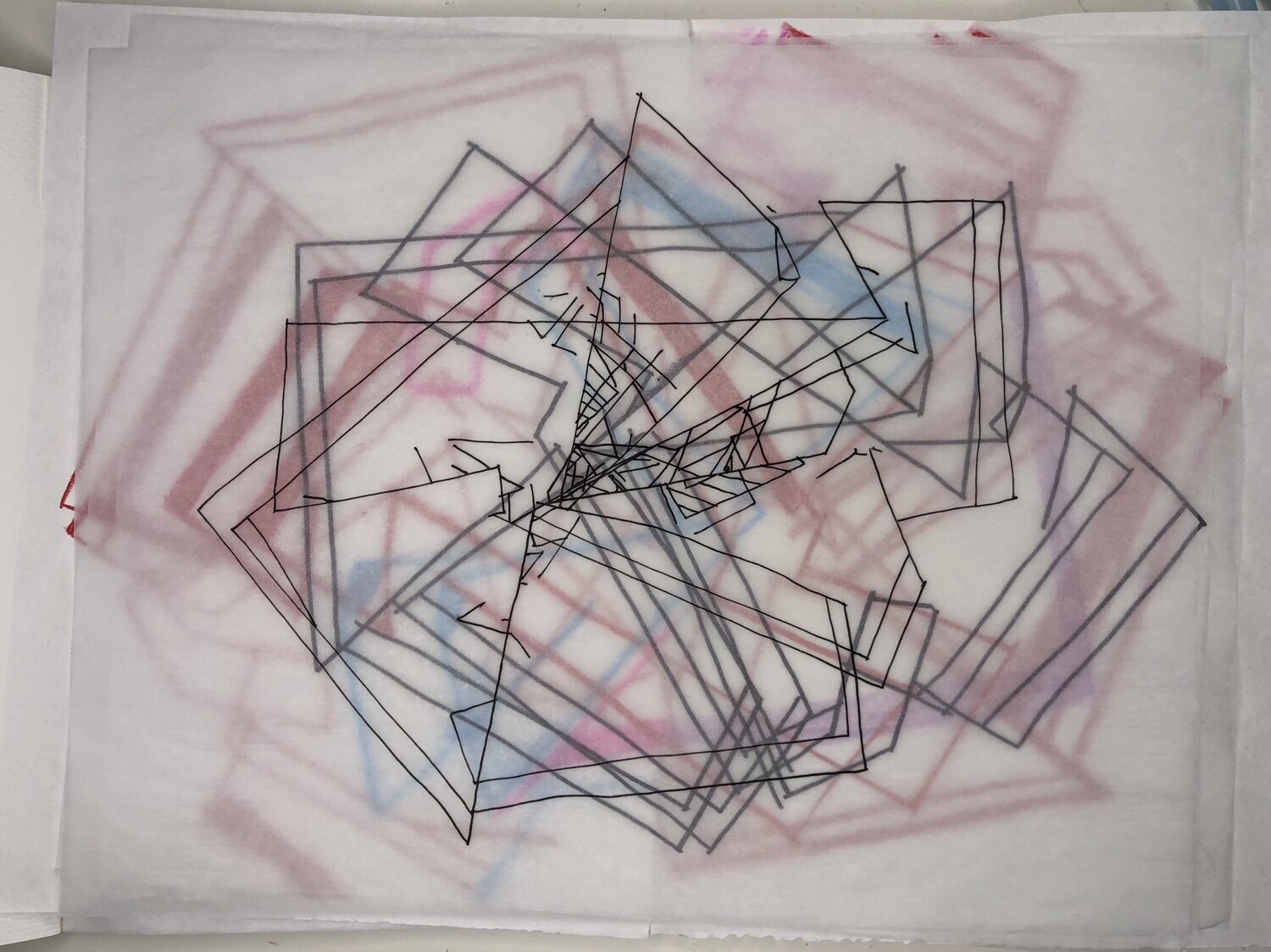Visiting Lecturer Tutorials - Catherine Baker
My thoughts and discussions with Catherine Baker:
Feelings about my practice: limited in terms of…. What am I trying to tell them [the audience]?
- articulate a regular routine
- punctuation of encounters
- punctuate routine
- celebrating or mundane?
Talking about the process - what does it mean when I do that.
1 - entity - collisions - in terms of happenings
2 - different materials - drawings on tracing and sandpaper - bring them together - butt up against, a more difficult counterpart.
Fixing them together - simple and how they collide.
-----Go back and see how they collide [previous work]
Leporello approach - concertina approach - a continuum - the fold creates a new space - make the folds out of new materials - wet and dry sandpaper -
a line is dictated by the substrate it's on - one material across all surfaces.
Allows for the intimacy of a book but could be 12 foot long or A2 so awkward to handle or attached to the ceiling.
How do you want people to behave? looking up and being intimate at eye level, allows for intimacy and distance in its framing.
I’m a materials person - embrace it!
What do materials represent - the difference through materials - the materials are anchored into the everyday - found materials - cardboard packaging, plastic bags; start with the simple materials and then look into the materials and what they might mean?
Structure line.
put work away - sit with them and unpack them.
not diarised - what did it mean when the same line travelled from one space, from entity to entity?
Lebbeus Woods
https://hyperallergic.com/131802/the-radical-and-contagious-ideas-of-lebbeus-woods/
Julie Mehretu
https://www.mariangoodman.com/artists/julie-mehretu
Agnes Martin
https://www.tate.org.uk/whats-on/tate-modern/exhibition/agnes-martin/who-is-agnes-martin
Sol Lewitt
collision - unpredictable
bringing together, sand things down - reinstate - erase parts to leave the junctions
To summarise:
FOCUS ON WHAT IT MEANS
how do they engage with it?
do they understand my intentions?
Leporello - small to large-scale - intimate object 20 versions x 12 feet long
Wallpaper by B. Makhoul - a line in space within so you can’t separate - immersive
bullet wallpaper - Palestine - looks pretty but symbolises violence and conflict - in the home
watch out for diarising the actions and question what is happening.
moments of collision
KFoster & CBaker Collision paper
-in chemistry - in proximity, they react
NOT CHAOS
Notes from Catherine Baker:
These are some of the words I wrote down as you were speaking:
Collage/fusion/adaptive reactions/ circumstance beyond control/ invented narratives/ routine/collision – collision of materials/requirement of proximity/ folds and joins in a Leporello.
I think you need to embrace the fact that you’re clearly a materials-driven person and explore the way in which two (or more eventually) materials can collide and how a repetitive act across them that is identical can be shaped by the interaction with the substrate.
I’ve attached an image/part of a Print I saw as part of IMPACT 10 in Santander on September 18. Plus the screenshot is Victoria Ahrens whose work is really interesting. Also classically you could look at Anselm Kiefer (also attached his lead books) and the idea of a Leporello type construction. I’ve included Kiefer as the ‘happenings’ collisions could be material based i.e. A chemical reaction; if you leave a watery gel drop overnight on a sheet of mild steel by the morning there will be a rust spot that signifies and records the ‘collision’ encounter.
I hope all these things help and remember to give yourself space to unpack what you’ve made and contemplate both it and its meaning for others.
Agreed actions:
- FOCUS ON WHAT IT MEANS
- how do they engage with it
- do they understand my intentions
- Leporello - small to large-scale - intimate object 20 versions x 12 feet long
- watch out for diarising the actions and question what is happening.
- moments of collision - everyday with everyday materials.






















































